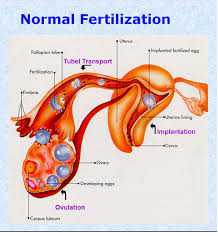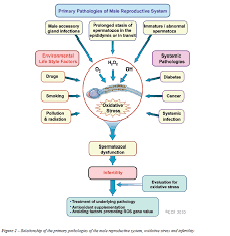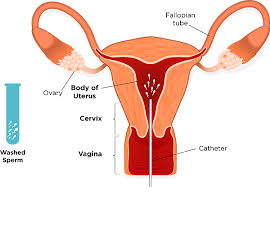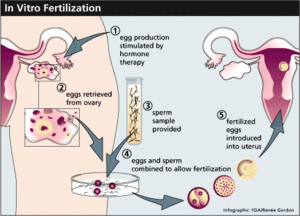[vc_row][vc_column][vc_tta_accordion color=”blue” spacing=”1″ c_icon=”triangle” active_section=”1″ no_fill=”true”][vc_tta_section title=”Who is considered an Infertile couple ?” tab_id=”1566200295344-7de27bc7-a292″][vc_column_text]Couple unable to achieve pregnancy after 1 year of regular unprotected intercourse.
 [/vc_column_text][/vc_tta_section][vc_tta_section title=” What are the causes of Infertility ?” tab_id=”1566200295392-80651516-e272″][vc_column_text]
[/vc_column_text][/vc_tta_section][vc_tta_section title=” What are the causes of Infertility ?” tab_id=”1566200295392-80651516-e272″][vc_column_text]
- Male factors accounts for 30%
- Female factors accounts for 30%
- Combined – 30%
- Unexplained – 30%
[/vc_column_text][/vc_tta_section][vc_tta_section title=”What are the causes of Female Infertility?” tab_id=”1566200653627-231a593e-ed4b”][vc_column_text]Ovarian factors : –
- Effect of age
- Chronic anovulation- PCOS
- Central and hypothalamic anovulation
- Ovarian cysts – endometriosis and others
Tuboperitoneal factors: –
- Endometriosis
- Infection
- Chlamydia trachomatis
- Gonococci
- Previous sterilization
Uterus: –
- Myomas
- Mullerian malformation
- Polyps>/li>
- Adhesion
Cervix: –
- Anatomical distortion
- Thin cervical channel
- Iatrogenic (Conization)
- Infections
- Immunologic
Immunologic factors: –
Male
– Serum
– Semen
– Sperm
Female
– Serum
– Vaginal and cervical secretions
– Follicular fluid
Unexplained :-
- Abnormal tubal function
- Failed fertilization
- Poor embryo development
- Failed implantation
- Others
[/vc_column_text][/vc_tta_section][vc_tta_section title=”What are the causes of Male infertility?” tab_id=”1566200707360-93d95e1d-9c94″][vc_column_text] [/vc_column_text][/vc_tta_section][vc_tta_section title=”What are the treatment options available?” tab_id=”1566201121915-d2b84a2b-559b”][vc_column_text]Infertility may be treated with medicine, surgery, artificial insemination or assisted reproductive technology based on couples test results and other factors.
[/vc_column_text][/vc_tta_section][vc_tta_section title=”What are the treatment options available?” tab_id=”1566201121915-d2b84a2b-559b”][vc_column_text]Infertility may be treated with medicine, surgery, artificial insemination or assisted reproductive technology based on couples test results and other factors.
There are severe grades of severity and its important to establish a prognosis after a work up.
Doctors use the histories of both partners and may run tests such as;
- Sperm studies
- ovulation tests,
- Ultrasonography (USG)
- Hystero-salpingography (HSG)
- Laparoscopy (Diagnostic / Operative)
- Hysteroscopy (Diagnostic /Operative)
[/vc_column_text][/vc_tta_section][vc_tta_section title=”Can drugs be given to increase Fertility?” tab_id=”1566284358225-25af4c3e-e0be”][vc_column_text]In the form of pills / injections, these release hormones that induce ovulation to boost egg production and make the uterus more receptive to embryo implantation.[/vc_column_text][/vc_tta_section][vc_tta_section title=”What is Artificial insemination or IUI?” tab_id=”1566284405608-a9f5ee79-dfd8″][vc_column_text]Specially prepared (washed) sperm is inserted directly into the uterus through a thin, flexible catheter during IVI, the most common fertility method.
Doctor might recommend that you take fertility drugs as well to increase the changes to fertilization.
 [/vc_column_text][/vc_tta_section][vc_tta_section title=”What is IVF?” tab_id=”1566284444071-8bd4d283-9d62″][vc_column_text]implanted in your uterus and the rest are stored. Multi step process (called a cycle) in which yours eggs are extracted and fertilized with sperm in laboratory. Once embryos develop, one or two are
[/vc_column_text][/vc_tta_section][vc_tta_section title=”What is IVF?” tab_id=”1566284444071-8bd4d283-9d62″][vc_column_text]implanted in your uterus and the rest are stored. Multi step process (called a cycle) in which yours eggs are extracted and fertilized with sperm in laboratory. Once embryos develop, one or two are
 [/vc_column_text][/vc_tta_section][vc_tta_section title=”What is Reproductive surgery?” tab_id=”1566284475941-fec598c6-fcaf”][vc_column_text]It is otherwise known as Fertility Enhancing Endoscopic Surgery. Used to correct anatomical abnormalities, i,e septate uterus, subseptate uterus, difficult cannulation, removal of scarring and clear blockages, in either the man or the women.[/vc_column_text][/vc_tta_section][/vc_tta_accordion][/vc_column][/vc_row]
[/vc_column_text][/vc_tta_section][vc_tta_section title=”What is Reproductive surgery?” tab_id=”1566284475941-fec598c6-fcaf”][vc_column_text]It is otherwise known as Fertility Enhancing Endoscopic Surgery. Used to correct anatomical abnormalities, i,e septate uterus, subseptate uterus, difficult cannulation, removal of scarring and clear blockages, in either the man or the women.[/vc_column_text][/vc_tta_section][/vc_tta_accordion][/vc_column][/vc_row]


